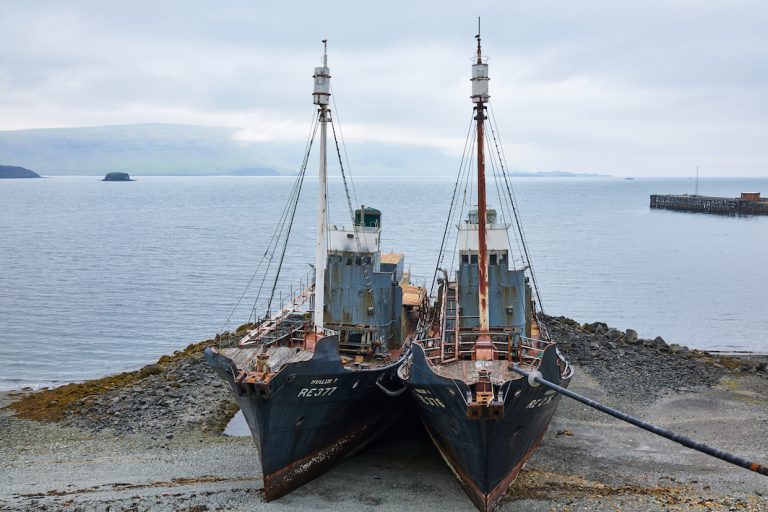For over 500 years, whaling has been practised in Iceland. That chapter in Icelandic history ended three years ago when all whaling was stopped in the country’s jurisdiction. In the sixteenth century, the Basques and the Dutch came here to hunt whales. The Basques built, among other things, three whaling stations in the Westfjords in the 17th century. The Norwegians started whaling here in 1883 and hunted so much that it was forbidden to catch larger whales by Iceland in 1915 due to overfishing. It was the first whaling ban in history. The ban lasted for twenty years or until Icelanders started whaling in 1935. After that, we hunted whales on a small scale until 1986, when the International Whaling Commission banned all whaling worldwide for commercial purposes. An exemption was granted for so-called scientific whaling and also for indigenous people. In 2003, Icelanders resumed fishing for scientific purposes and for commercial purposes three years later. That was stopped in 2018, and since then, no whales have been caught off the coast of Iceland. About 12 species of whales are considered common in Iceland: The blue whale, finback whale, humpback whale, sperm whale, sei whale, pilot whale, porpoise, the Atlantic white-sided dolphin, white-beaked dolphin, killer whale and the bottle-nosed whale. The Atlantic white-sided dolphin is the most common, with a population size of 75,000 animals. The blue whale is among the rarest, with only about 1000 animals by Iceland.
Hvalfjörður 31/07/2021 18:31 35mm
Photo and text: Páll Stefánsson


